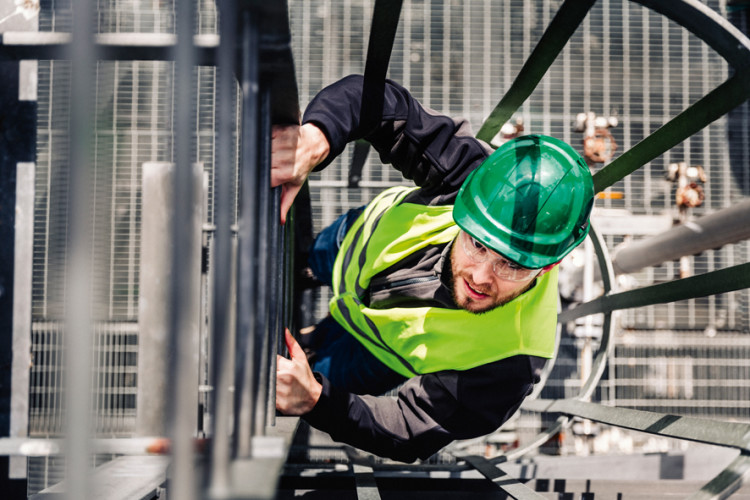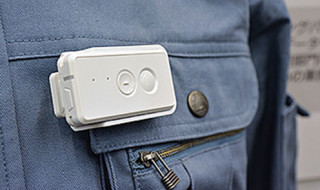Despite huge improvements in general site safety, construction remains a hazardous industry especially for drivers and lone workers.
With no help at hand in the event of an accident, lone workers are especially vulnerable. And without co-workers around to keep an eye on each other, fatigue can go unnoticed.
Last year contractor Amey conducted a trial of three items of ‘wearable technology’ to monitor workers while driving and working alone on site.
Eight members of staff on the North East Regional Technology Maintenance contract for Highways England were equipped with devices supplied for the trail by technology firm Fujitsu. These comprised a ‘drowsy driver’ device, a ‘vital band’ to monitor vital signs such as heart beat and body temperature, and a location badge to detect slips, trips and falls.
“The north-east regional technical maintenance contract covers a huge area – it stretches from Sheffield to Berwick,” explains Mike Kehoe, principal engineer for intelligent transport systems at Amey. “Someone on that contract can drive for four or five hours, be on site for three hours and then have to drive back.
“The fatigue element can really ramp up,” adds Kehoe.
Given the clear risks involved, he looked into the existing methods available to protect workers on this contract.
“The current position is a manual process of calling via mobile phone to a service desk or manager to let them know when you arrive on site,” says Kehoe. “You are then required to call in every 30 minutes to confirm you are OK. You then call in to say when you’ve finished and are leaving the site.”
This arrangement has obvious shortcomings given the time elapsed between calls. By the time your manager becomes aware of a problem, it might be too late. The system also has no way of detecting fatigue driving; this can only be recorded by drivers reporting the incidents themselves. Some intervention to warn the driver of their growing fatigue was highly desirable.
The trial took place over nine weeks from July through to August 2017. In addition to the eight lone workers participating, Kehoe and a number of managers on the contract also wore the devices for the duration of the trial.
“There is some natural resistance to this kind of thing,” admits Kehoe. “The minute you mention the words ‘monitoring’ and ‘tag’, people become suspicious.” Kehoe says it was only right that he should wear the equipment too – not just to mollify his site workers, but also to get first-hand feedback on the suitability of the devices.
The results of the trial were illuminating, but somewhat inconclusive. “The outcome was probably 50:50,” admits Kehoe. “There were advantages but there were also several disadvantages.”
The drowsy driver device, which uses a sensor fixed to the earlobe via a spring-clip, worked well and in at least one instance averted a serious accident by generating a close-call alarm. But this type of device is really suited only to long-distance drivers and the need to reset the device each time the driver commences a journey means it is time-consuming and cumbersome when the work involves short hops between several locations.

This can even increase the driver’s exposure to risk, says Kehoe. “Short-duration stops by the side of the road were getting longer due to the time spent switching between modes,” he says. And the longer a driver sits in a stationary vehicle at the side of a busy road, the greater the risk.
It was also discovered that the device did not always function correctly if the user wore earrings.
The vital band, monitoring heart beat and heat stress, was even less successful. Worn around the neck and over the chest, this device was found to be quite obstructive, even catching on wiring inside equipment control cabinets. Amey experimented with an arm-band version, but with little improvement in practicality. The device also gave the wearer no feedback and had the unfortunate property of resembling a Home Office tagging device in appearance.
One of the biggest drawbacks discovered by Amey was the sensitivity of the devices – especially the location badge, which was worn over the breast pocket. Designed to alert the service centre of slips, trips and falls, and to send an alert if the user remains motionless for more than a few minutes, this device would raise the alarm if the wearer removed their jacket and threw it onto the back seat of their vehicle.
On one occasion the vital band created an alarm that had a most unexpected cause:
“There was one incident in which the user’s exertion rate was rising and there was a sudden increase in temperature and humidity,” says Kehoe. It transpired that the user was wearing his device at home to get used to it – and had just got up to do the ironing.
The results of the trial are tantalising, says Kehoe, as the technology certainly can alert employers instantly of any accidents or potential problems affecting lone workers. But the sensitivity of the devices and their inability to distinguish actual health and safety problems from false alarms is a major drawback.
“We found that it was actually making a lot more work for us,” admits Kehoe. “Supervisors and managers were making a lot of calls just to ensure that an incident had not taken place,” he adds.
Another stumbling block – though probably not an insurmountable one – is the question of intrusion, especially in the light of the Data Protection Act and the new GDPR Act that came into force earlier this year.
In the end, Amey concluded that only the drowsy driver device was fit for purpose. Even then it was not universally applicable and would require further development before it was worth adopting.
Wiring a worker up to three separate devices to safeguard their health and safety is also fiddly and cumbersome; the trail of wires and the instruments themselves can cause obstructions and make working difficult.
“We began to think that, going forward, wouldn’t it be good if all these functions could be put into just one small device?” says Kehoe. Sadly, such a device does not yet exist. “But that’s really where we are at the moment,” he says; “We’re looking at the tech out there to see what’s being developed.”
Fujitsu’s ‘Ubiquitousware’ product development programme, from which the trial devices were sourced, is at the forefront of the so-called Internet of Things (IoT), but Fujitsu is not the only company driving this technology. Amey is now casting its net a bit wider, says Kehoe.
“There are loads of sensors and communications equipment installed along the road network. Why not have a device on a person that can ping data back and forth via this technology?” he asks.
The market in wearable tech is moving fast and the three devices trialled by Amey, while still quite new, would need further development before they resemble the kind of robust, all-round device suitable for the environment in which Amey’s staff work.
This article was first published in the October 2018 issue of The Construction Index magazine
UK readers can have their own copy of the magazine, in real paper, posted through their letterbox each month by taking out an annual subscription for just £50 a year. Click for details.
Got a story? Email news@theconstructionindex.co.uk






